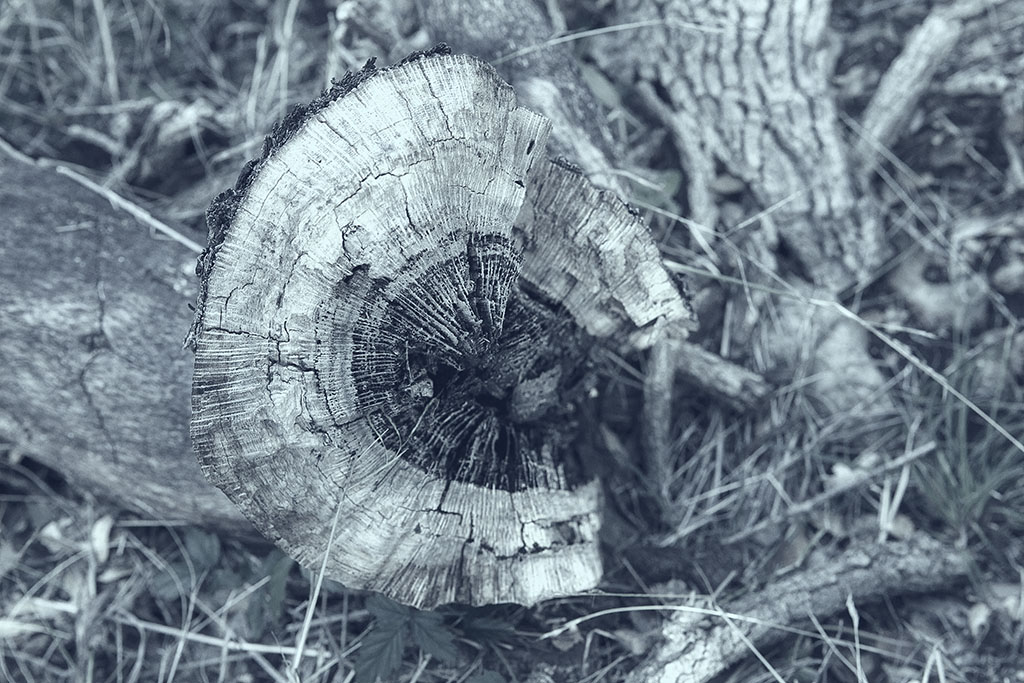Oak Cross Section
I spotted the broken oak branch lying in front of me. Not an uncommon sight on my hikes, but this branch was different. The break was fairly clean and flat, but I don’t think it had been cut. It looked like it had been down for a while and decay had set in. The branch was about 8 inches in diameter.
The decay and weathering had brought out the structure of the wood and it just looked cool. It was much neater seeing it live (dead?) than in a text book.
The heartwood, in the center of the branch was much darker than the sapwood on the outside. It’s thought that the heartwood is dead and it’s undergone a chemical transformation that is supposed it more resistant to decay than the sapwood, but this branch showed the opposite. The oak’s heartwood is definitely more decayed.
The sapwood is the living part of the tree and its purpose is to convey water from the roots to the leaves. The tree grows by adding a layer of sapwood each year and this leads to the rings which are used to determine the tree’s age.
The thickness of the heartwood and sapwood are both about 50% of the diameter of the branch, but this is not a rule.
Live oaks are slow-growing trees and the rings are pretty tightly-spaced. It’s not easy to count them.
A thin layer of bark remains in parts, but most of it is gone.


Comments
Oak Cross Section — No Comments
HTML tags allowed in your comment: <a href="" title=""> <abbr title=""> <acronym title=""> <b> <blockquote cite=""> <cite> <code> <del datetime=""> <em> <i> <q cite=""> <s> <strike> <strong>